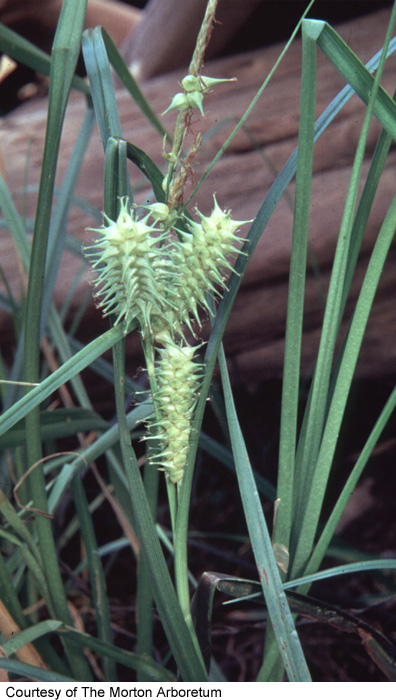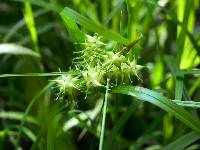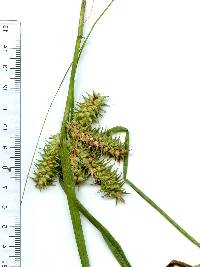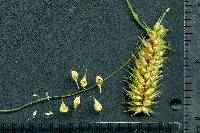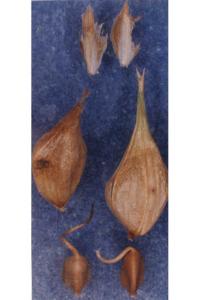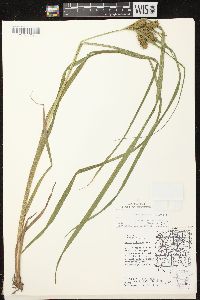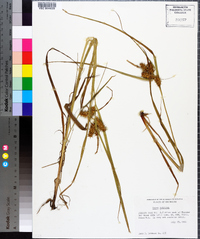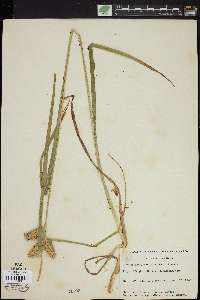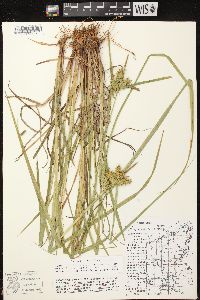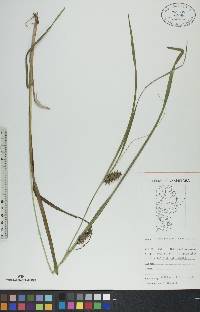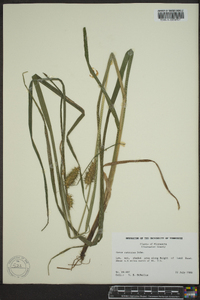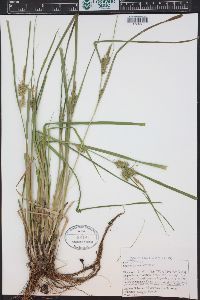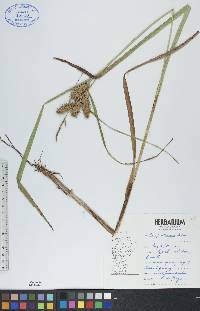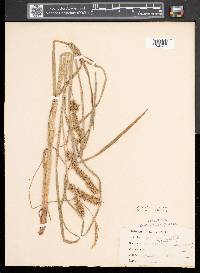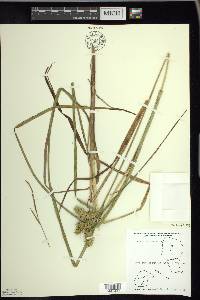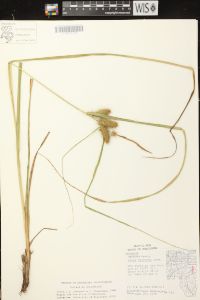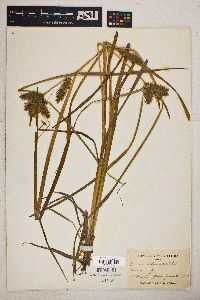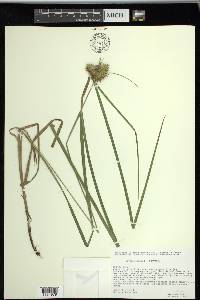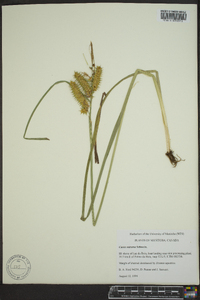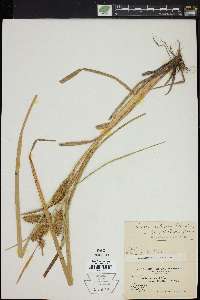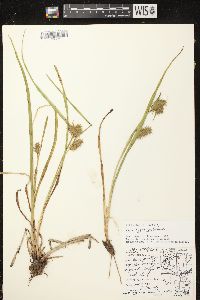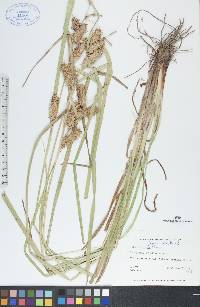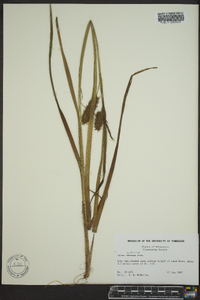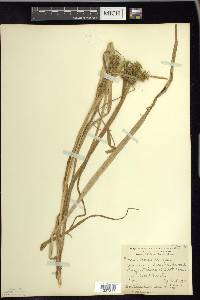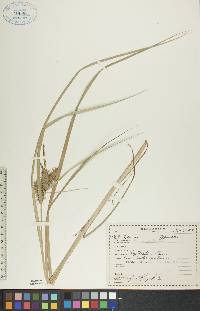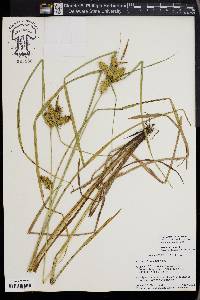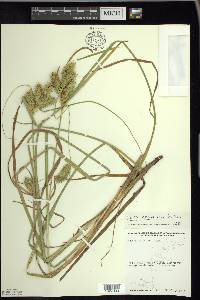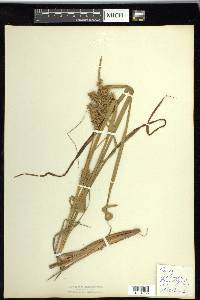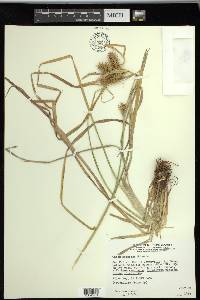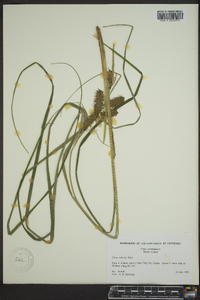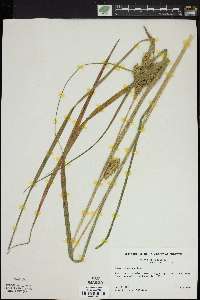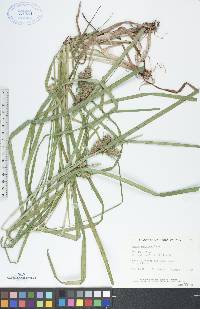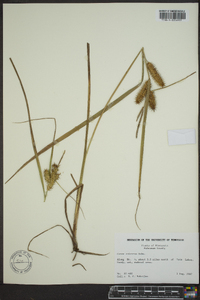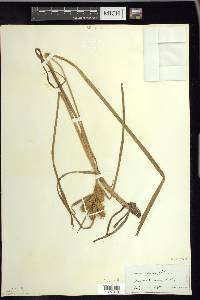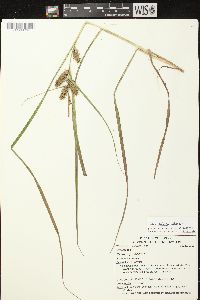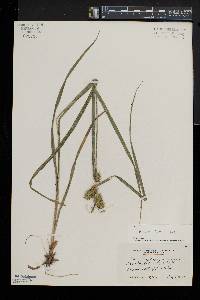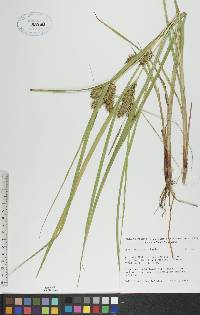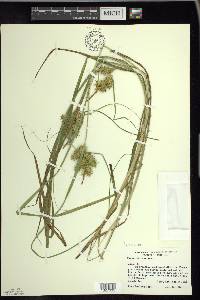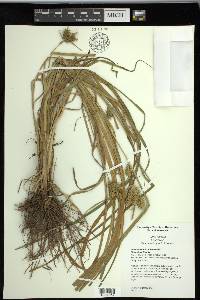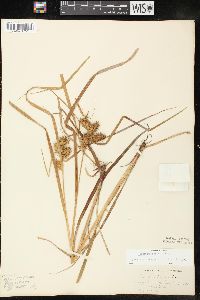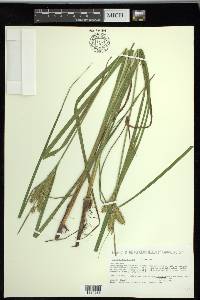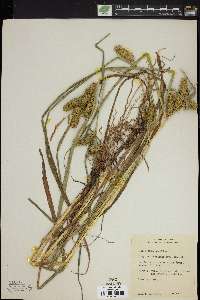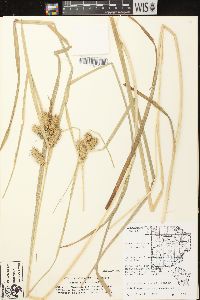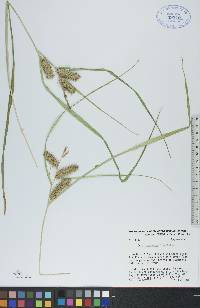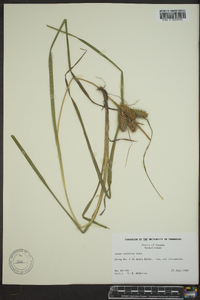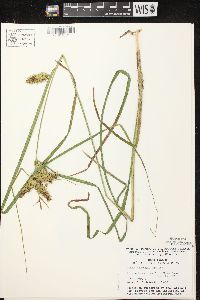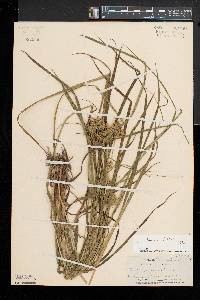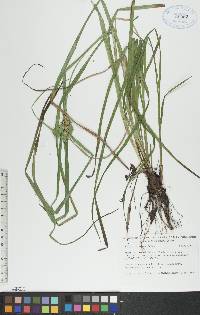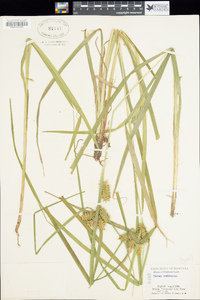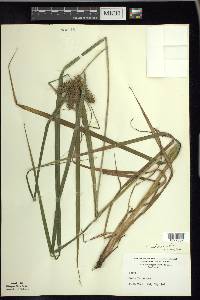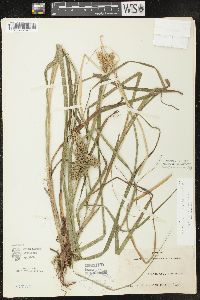Carex retrorsa
|
|
|
|
Family: Cyperaceae
Retrorse Sedge
[Carex lupulina var. gigantoidea Dewey, moreCarex retrorsa var. robinsonii Fernald] |
Plants cespitose; rhizomes very short or inconspicuous. Culms trigonous in cross section, 10-105 cm, smooth distally. Leaves: basal sheaths dark reddish brown; ligules longer than wide; blades mid to dark green, flat to W-shaped, widest leaves 3-10 mm wide, glabrous. Inflorescences 3-20(-35) cm; proximal bract 19-70(-100) cm, (2.5-)3-9 times longer than inflorescence; proximal (2-)3-6 spikes pistillate, ascending to spreading, at least the distal erect, ca. 20-150-flowered, cylindric; terminal 1(-3) spikes staminate, slightly if at all elevated beyond summit of crowded pistillate spikes. Pistillate scales narrowly ovate, 2.4-4.5 × 1.1-1.8 mm, shorter than perigynia, margins entire, apex acute to acuminate, awnless. Perigynia mostly reflexed at maturity, often green or straw colored, strongly 6-13-veined, veins running into beak, ovate, 6-10 × (1.6-)2.1-3.4 mm, apex abruptly tapered; beak 2.1-4.5 mm, bidentulate, smooth, teeth straight, 0.3-1.1 mm. Stigmas 3. Achenes pale brown, symmetric, not indented, trigonous, smooth. Fruiting Jun-Aug. Swamps, wet thickets, often along streams, marshes, sedge meadows, shores of streams, ponds, and lakes; 0-1900 m; B.C., Man., N.B., Ont., Que., Sask.; Conn., Idaho, Ill., Ind., Iowa, Maine, Mass., Mich., Minn., Mont., N.Y., Oreg., Pa., Utah, Vt., Wash., Wis., Wyo. Very rarely, specimens appear to be intermediate between Carex retrorsa and C. lupulina or C. lupuliformis; they are likely hybrids.
Stems 3-10 dm, densely clustered on a very short rhizome; lvs septate- nodulose (especially the sheaths), mostly 4-10 mm wide; lvs subtending the pistillate spikes sheathless or only shortly sheathing, at least the lowest one generally several times as long as the infl; spikes several, crowded, sessile or nearly so, or the lowest one more remote and slender-pedunculate; lower spikes pistillate, the upper staminate or androgynous; pistillate spikes 1.5-5 נ1.5-2 cm; pistillate scales conspicuous, shorter and narrower than the perigynia; perigynia numerous, densely crowded in 8+ rows, widely spreading or the lowest ones retrorse, glabrous, shining, evidently 6-13-nerved, 7-10 mm, firm-walled but somewhat inflated, ellipsoid to subglobose and often somewhat oblique, narrowed to a prominent, slender, smooth beak 2-3(-4) mm with short (0.3-0.9 mm) teeth; achene dark brownish, narrowly trigonous, 2 mm, loose in the lower part of the perigynium, the persistent, bony style becoming contorted with maturity; 2n=70. Swampy woods and wet meadows; Que. to B.C., s. to Del., Md., Ind., Io., and Oreg. Gleason, Henry A. & Cronquist, Arthur J. 1991. Manual of vascular plants of northeastern United States and adjacent Canada. lxxv + 910 pp. ©The New York Botanical Garden. All rights reserved. Used by permission. From Flora of Indiana (1940) by Charles C. Deam Known in Indiana from two collections near the northern border of the state; edge of swamp, East Chicago, Lake County, W. S. Moffatt, July 2, 1893, and, near St. Mary's Academy, Notre Dame, St. Joseph County, J. A. Nieuwland, July 9, 1913. No corroborating specimens have been seen for the report in Coulter's Catalogue from Gibson County, Wilson's report from Hamilton County or Schneck's from the Lower Wabash Valley. ...... Indiana Coefficient of Conservatism: C = 10 Wetland Indicator Status: OBL |

